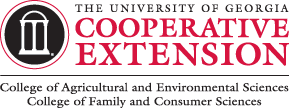Download the PDF version of this post.
The 2018 Farm Bill, officially known as the Agriculture Improvement Act of 2018, provides safety net support programs for agricultural producers throughout the United States. These programs include the Agriculture Risk Coverage (ARC) and Price Loss Coverage (PLC) programs for Title I covered commodities. Covered commodities include barley, canola, large and small chickpeas, corn, crambe, flaxseed, grain sorghum, lentils, mustard seed, oats, peanuts, dry peas, rapeseed, long grain rice, medium grain rice (which includes short grain rice), safflower seed, seed cotton, sesame, soybeans, sunflower seed and wheat.
One of the fundamental changes in the 2018 Farm Bill is a new election between ARC and PLC for 2019 and 2020 and then annual elections starting in 2021.
- The first decision facing producers is the program choice between ARC and PLC for the 2019 and 2020 crop years. All producers of the farm must make a unanimous election.
- After such election, producers must also enroll in the elected program for 2019 and 2020.
- Producers will have a yearly option of re-electing between ARC and PLC and enrolling in the elected program for each of the crop years from 2021 to 2023.
Table 1. Timeline for ARC and PLC election and enrollment.
| Begin | End | |
| ARC/PLC Election for 2019 and 2020 | September 3, 2019 | March 15, 2020 |
| ARC/PLC Enrollment for 2019 | September 3, 2019 | March 15, 2020 |
| ARC/PLC Enrollment for 2020 | October 7, 2019 | June 30, 2020 |
| ARC/PLC Election and Enrollment for 2021 | October 2020 | March 15, 2021 |
| ARC/PLC Election and Enrollment for 2022 | October 2021 | March 15, 2022 |
| ARC/PLC Election and Enrollment for 2023 | October 2022 | March 15, 2023 |
In the event that producers of a farm do not make a unanimous election for 2019, then the farm will default to the ARC/PLC election of the crops on the farm established under the 2014 Farm Bill. If the election defaults, producers will not be eligible for payments for the 2019 marketing year. Under the default election, payments will begin for the 2020 marketing year.
FSA does not mandate producers to make re-election in the crop year 2021 or each subsequent crop year. The re-election option is to be exercised solely at the discretion of the producers on the farm and is not a mandatory decision. Annual enrollment of the ARC/PLC program, however, is required.
A series of publications were released by UGA AgEcon Extension discussing in detail about the APC and PLC programs, implications, and guidance on decisions and are available at Georgia Agricultural Policy https://agecon.uga.edu/extension/policy.html.
References
Liu, Y. & Rabinowitz, A. N. First Look at the Farm Bill Title I for Row Crops: Agriculture Improvement Act of 2018. Department of Agricultural and Applied Economics, University of Georgia. Report No. AGECON-18-10. December 2018.
Liu, Y., Rabinowitz, A. N. & Lai, J. H. Understanding the 2018 Farm Bill Effective Reference Price. Department of Agricultural and Applied Economics, University of Georgia. Report No. AGECON-19-02PR. July 2019.
Liu, Y., Lai, J. H. & Rabinowitz, A. N. Updating the Price Loss Coverage (PLC) Payment Yields in the 2018 Farm Bill. Department of Agricultural and Applied Economics, University of Georgia. Report No. AGECON-19-10PR. October 2019.
Liu, Y., Rabinowitz, A. N. & Lai, J. H. Eligibility and Payments under the 2018 Farm Bill PLC and ARC Programs. Department of Agricultural and Applied Economics, University of Georgia. Report No. AGECON-19-12PR. November 2019.
Liu, Y., Rabinowitz, A. N.& Lai, J. H. Computing the PLC and ARC Safety Net Payments in the 2018 Farm Bill. Department of Agricultural and Applied Economics, University of Georgia. Report No. AGECON-19-13PR. November 2019.
Rabinowitz, A. N., Liu, Y. & Lai, J. H. The 2018 Farm Bill PLC and ARC Decision: Implications for Georgia Producers. Department of Agricultural and Applied Economics, University of Georgia. Report No. AGECON-19-14PR. November 2019.

